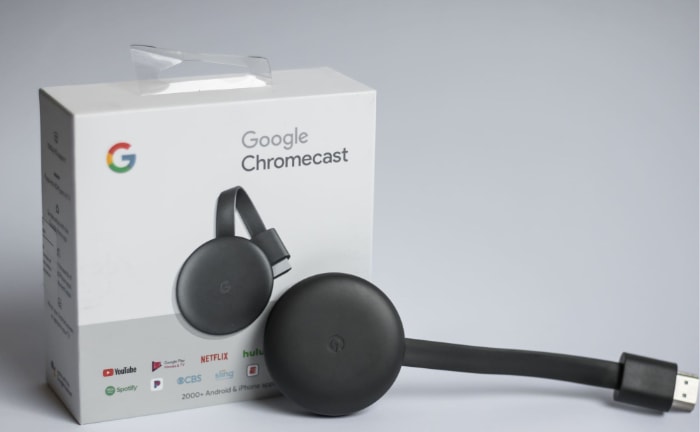Miracast vs. Chromecast: Choosing Your Pixel Partner

Streaming content from your device to a bigger screen has revolutionized how we consume media, making it a seamless part of our digital lives. Among the champions leading this change are Miracast and Chromecast, two technologies that have become household names for anyone looking to bridge their devices with their televisions.
But as much as they share a common goal, their paths to achieving it are distinct, each with its own set of features, compatibility, and user experience. This comparison isn’t just about pitting one technology against the other; it’s about uncovering which tool best matches your lifestyle and streaming needs.
Technology Overview
Miracast
Miracast is a technology that lets you mirror the screen of one device onto another, making it possible to share content directly without needing a physical connection. It operates on Wi-Fi Direct, which means devices can connect to each other without requiring a separate Wi-Fi network.
This standard is widely supported across various devices, including smartphones, tablets, and televisions, allowing for a broad range of use cases from presentations to gaming. The technology essentially turns your display into a wireless TV or monitor, offering a convenient way to project your screen.
Chromecast
Chromecast, developed by Google, offers a different approach to streaming. Instead of mirroring screens, it streams content from the internet directly to your TV or monitor through a small dongle plugged into an HDMI port.
Once connected, it uses your Wi-Fi network to fetch content from the cloud, allowing you to control what’s playing from your smartphone, tablet, or computer. This method ensures high-quality streaming of videos, music, and even web pages, without draining the battery of your controlling device.
Chromecast supports a wide range of apps and services, making it a versatile choice for entertainment, educational content, and more.
Setup and Ease of Use
Miracast
Getting Miracast up and running is generally straightforward, provided both the sending and receiving devices support the standard. The process involves enabling Wi-Fi Direct on both devices, which allows them to connect to each other directly.
On many devices, this is as simple as selecting the Miracast or screen mirroring function in the display settings. There’s no need for cables or an existing Wi-Fi network, making it an excellent option for on-the-go presentations or sharing content in environments where network access might be restricted.
However, the ease of setup can vary depending on the specific devices and their operating system versions, as compatibility is key to a smooth Miracast experience.
Chromecast
Setting up a Chromecast involves a few more steps but remains user-friendly, especially for those already integrated into the Google ecosystem. After plugging the Chromecast dongle into your TV’s HDMI port and connecting it to power, you’ll need to download the Google Home app on your smartphone or tablet to complete the setup.
The app guides you through connecting the Chromecast to your Wi-Fi network and linking it to your Google account, allowing you to start streaming content from supported apps almost immediately. The reliance on a Wi-Fi network and a Google account might add complexity compared to Miracast’s direct approach, but it also enables a wider range of features and a more integrated experience with apps and services.
Streaming Quality and Performance
Miracast
The streaming quality of Miracast largely depends on the Wi-Fi Direct connection between the devices. This means the physical distance and obstacles between the devices can impact the smoothness and quality of the stream.
When conditions are optimal, Miracast can support HD and even 4K video transmission, offering a satisfying viewing experience for both media consumption and real-time presentations. However, users might notice latency issues, especially when streaming high-resolution content or during high-demand scenarios like gaming, where every millisecond counts.
This makes Miracast well-suited for static images or videos but less ideal for action-packed content where timing is critical.
Chromecast
Chromecast excels in streaming quality and performance, with its ability to fetch content directly from the internet, bypassing the limitations of device-to-device connections. This setup minimizes latency and allows for the streaming of high-definition content smoothly and consistently.
The device is designed to handle a wide range of resolutions, up to 4K Ultra HD, depending on the Chromecast model. Additionally, because the content is streamed from the cloud rather than mirrored from another device, battery life on controlling devices is preserved, and performance issues related to the device’s processing power are avoided.
Chromecast’s performance is contingent on the speed and reliability of the Wi-Fi network, making a strong, stable connection crucial for the best experience.
Compatibility and Flexibility
Miracast
Miracast’s compatibility spans a wide range of devices, from smartphones and tablets to laptops and smart TVs. Essentially, any device that supports Wi-Fi Direct and the Miracast standard can initiate or receive a Miracast transmission.
However, it’s crucial to note that not all devices, especially older models, come with built-in Miracast support. The technology is more common in devices running Windows and Android operating systems, while Apple devices do not natively support Miracast, favoring their AirPlay standard instead.
This can limit flexibility for users within the Apple ecosystem or in mixed-device environments. Despite these limitations, Miracast’s broad support across numerous devices makes it a versatile option for screen mirroring across many non-Apple products.
Chromecast
Chromecast offers a different kind of flexibility, focusing on compatibility with a wide range of apps and services rather than the devices themselves. While the Chromecast device needs to be connected to a TV or monitor, the content can be controlled from nearly any device with a Wi-Fi connection, including smartphones, tablets, laptops, and even desktop computers, regardless of the operating system.
This makes Chromecast extremely flexible for users who consume content from diverse sources, including YouTube, Netflix, Spotify, and many others. Additionally, developers can add Chromecast support to their apps, continuously expanding the ecosystem of compatible content.
The main limitation of Chromecast is the requirement for a Wi-Fi network and a Google account, which may not suit everyone’s preferences or available infrastructure.
Cost and Accessibility

Miracast
The accessibility of Miracast is somewhat dependent on the hardware you already own. Many modern Windows and Android devices come with built-in Miracast support, meaning there’s no additional cost if your devices are compatible.
However, for those without built-in support, purchasing a Miracast dongle or adapter is necessary to enable functionality. These dongles are generally affordable, with prices varying based on the brand and features offered.
The overall cost-effectiveness of Miracast is high for users who have compatible devices, as it requires no further subscriptions or fees beyond the initial setup.
Chromecast
Chromecast devices are priced in a range that makes them accessible to a wide audience, with different models available to suit various needs and budgets. The standard model is capable of streaming 1080p content, while the more expensive Chromecast Ultra supports 4K streaming.
Beyond the purchase of the device, there are no mandatory additional costs for using Chromecast’s basic functionalities. However, accessing content from subscription-based services like Netflix or Hulu requires a separate subscription.
The Chromecast’s value is enhanced by its integration with the Google ecosystem and the wide range of supported apps, making it a versatile addition to any home entertainment system.
Advantages and Limitations
Miracast
Advantages
- Device Independence: Miracast allows for screen mirroring without the need for specific apps or software, making it versatile across different platforms and devices that support the standard.
- No Wi-Fi Network Required: Utilizing Wi-Fi Direct, Miracast connections are made possible without a traditional Wi-Fi network, offering flexibility in various settings, including those where network access might be restricted or unavailable.
- Easy Integration: For devices already supporting Miracast, no additional hardware is required, making it an accessible option for immediate screen mirroring.
Limitations
- Compatibility Issues: Despite its wide adoption, not all devices support Miracast, leading to potential compatibility challenges across different ecosystems, particularly with Apple devices.
- Performance Variability: The quality of the connection and streaming experience can vary significantly depending on environmental factors, device capabilities, and distance between devices.
- Limited Content Interaction: Unlike some streaming devices, Miracast primarily mirrors the screen without offering additional functionalities, such as using the phone for other tasks while streaming.
Chromecast
Advantages
- Wide Content Availability: Chromecast supports a vast array of streaming services and apps, providing users with access to a broad spectrum of content from movies and music to games and educational materials.
- Integration with Google Ecosystem: Users benefit from seamless integration with Google Home and other devices within the Google ecosystem, enabling voice commands and smart home connectivity.
- High-Quality Streaming: With support for up to 4K resolution, Chromecast ensures high-quality content delivery, optimized through cloud-based streaming to reduce latency and improve performance.
Limitations
- Dependence on Wi-Fi Network: Unlike Miracast, Chromecast requires a stable Wi-Fi connection to stream content, which can be a limitation in areas with poor internet access.
- Additional Costs for Content: While the device itself is affordable, accessing premium content often requires subscriptions to various streaming services.
- Device Occupancy: To stream content, a smartphone or computer is typically needed to initiate the stream, which could limit the use of these devices for other purposes during streaming sessions.
Conclusion
Choosing between Miracast and Chromecast hinges on personal or professional needs, ranging from the types of devices being used to the desired streaming content and the environment in which they will be operated. Miracast shines in settings that require direct, device-to-device connections without the need for a Wi-Fi network, catering especially to business presentations or quick content sharing.
On the other hand, Chromecast excels in a home entertainment setup, offering access to a wide array of streaming services and seamless integration with the Google ecosystem for a more connected, smart home experience.
Deciding which technology to adopt involves considering several factors such as device compatibility, quality of the streaming experience, flexibility in content access, and overall cost. While Miracast offers a straightforward solution for screen mirroring, Chromecast provides a richer, more interactive streaming experience with the convenience of controlling content through various devices.
Both technologies have evolved to address specific market needs, emphasizing the importance of understanding these nuances when making a selection. Reflecting on the advantages and limitations of each can guide users to a choice that best aligns with their lifestyle, whether it’s for professional use, casual content consumption, or enhancing a home entertainment system.
This comparison underscores the dynamic nature of technology and its ability to cater to diverse consumer preferences and scenarios, empowering users with options to enhance their digital experience.


